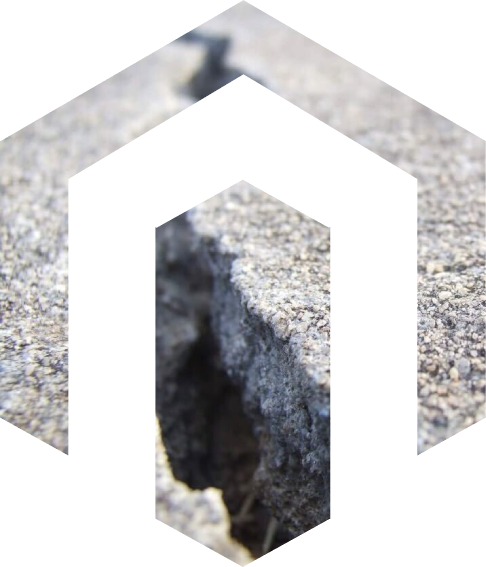I’m Here To Assist You
Licata Building System needs your contact information to contact you about our products and services. Our specification manager will contact you shortly in regard to your enquiry.

If the concrete is damaged beyond the ability of one of our systems to repair it, it will need to be removed and replaced. This can be a very noisy, dirty and costly process.
The first thing that needs to happen is that the existing concrete will need to be removed. This is typically done by jackhammering the existing concrete into countless tiny pieces. Once all the damaged concrete has been broken up and removed the next step is to clean the area and prepare it to receive the new concrete.
Once the new concrete has been poured either into a slab or a vertical mould it must be left to cure. In most cases that means waiting 24-48 hours before walking on it or applying any type of pressure to it. Although it will not be fully cured for roughly 28 days.
If a concrete slab has developed cracks due to the freeze-thaw cycle or age it can often be repaired fairly easily.
If fairly insignificant pieces of the concrete have broken off leaving the exterior of your building looking old and in run-down, repairing the concrete is a much more reasonable response than replacing it wholesale.
If the damage has not in any way compromised the structural integrity of the concrete then it does not make a lot of sense to replace huge areas when a simple repair could rectify the situation.
If the concrete in question is more than 30 years old then it makes sense to replace it instead of trying to repair it. This is especially true if the concrete in question is regularly exposed to wear and tear from pedestrian traffic or cars or structural load. Concrete in such high-stress areas typically has a life-expectancy of 25 – 50 years. So trying to repair it if it is already 30 or 35 years old doesn’t make much sense.
Trying to repair a concrete slab that has deep potholes in it is also a losing proposition. In addition, if a concrete slab is sinking more than 6 or 8 inches then it makes sense to replace it because the problem lies with the base, and no amount of filling cracks will address that problem effectively.
Even on structural concrete repairs will likely be effective if the damage is confined to cracks, delamination, scaling, spalling or abrasions. If the problem is more deep-seeded than that and potentially undermines the integrity of the concrete then there is no other option to replace the concrete. If that is even possible.
Licata concrete repair systems are the smart and cost-effective way to address problems in concrete slabs, pillars, driveways, sidewalks and elsewhere. Licata concrete repair systems enable you to make aesthetically satisfying repairs quickly so that you can minimize disruption to your home life or business operations.
Before you commit to replacing your damaged or worn concrete get to know Licata’s full line of concrete repair systems.
The decision to repair or replace concrete will be made on a case-by-case basis. As a general rule of thumb, contractors advise that if more than 2 inches of concrete needs repair it should probably be replaced instead. However, the size of the damaged or compromised area is not the only factor in determining whether you should repair or replace concrete.
Other factors include:

Will the repaired portion appear drastically different from the rest of the surface? If the answer is “yes” and the compromised portion is in a highly visible place then you may be compelled to replace the entire area for the sake of aesthetic continuity.

As in “how long can you afford to have the damaged area out of commission. If the damage is in a particularly important or sensitive area you may need to simply repair the area, even if the damaged area is fairly large or a repair will create an aesthetic headache.

If the compromised section of concrete is in a difficult-to-access area where preparing for or executing a pour would be problematic you may want to simply repair the area regardless of how extensive the damage is, as long as the damage is not structural.

If demolishing an entire section of concrete and replacing it is simply not in the cards from a financial standpoint you may have to content yourself with a repair. Again, as long as the damage has not compromised the structure, a temporary repair may be the right choice.

If the subbase under the concrete has eroded due to age, weather or whatever reason a repair just won’t be feasible. Regardless of whether it fits neatly into your budget or not the compromised base will need to be addressed and replacement will be called for.
Concrete is a composite material and may deteriorate for any one of several reasons. Often times a poor installation is the cause, in the sense that not enough care was given preparing the subbase. In other cases, the concrete mix may have been substandard. Poorly placed expansion joints may also be to blame
Licata Building Solutions is a leading Italian supplier of building materials, products and solutions for facades and interior surfaces. We have four depots and showrooms in the UK, all stocking our extensive product range.